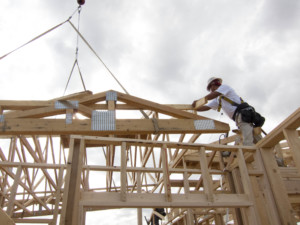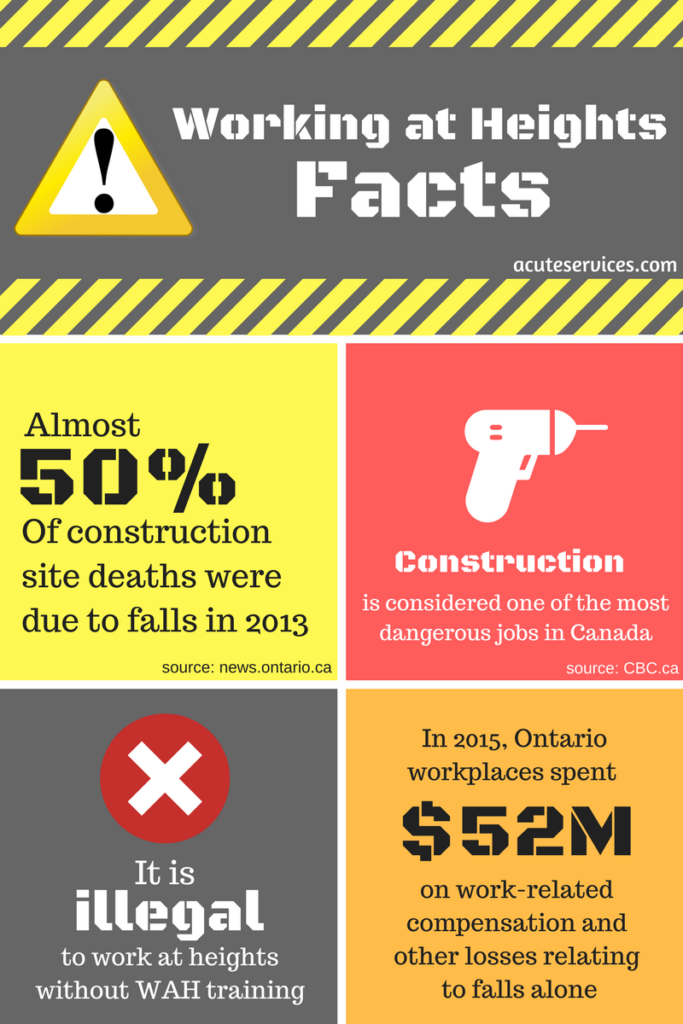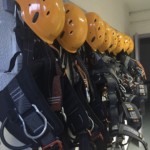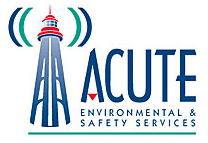Working at Heights Standards & Requirements Summary
Working at heights training is not just recommended, it is required by law for many workers in the construction field. Employers must ensure that workers receive working at heights training from a CPO-approved trainer. Because working at heights training is required, there are many standards and requirements for workers, employers, and training providers alike. On this page you’ll find information on the WAH courses that we offer. You’ll also find information about the specific regulations in Ontario.
If you have questions or comments regarding working at heights regulations or training, or you’re looking for a course not mentioned on this page, feel free to contact ACUTE and we would be happy to help!
Different Levels of Working at Heights Training
The following is a list of the WAH and fall prevention training courses typically offered by training providers in Ontario. When looking at different training providers, you will notice they offer many of the same courses.
Working at Heights Training Course (Required by The Ministry of Labour, Immigration, Training and Skills Development)
 Employers are required by the MLITSD to provide their workers with this working at heights training course. This is the first step to working at heights training. These working at heights courses typically cover fall hazards and prevention, the inspection and use of safety equipment and harnesses, and legislation information. This course usually ends with a written test.
Employers are required by the MLITSD to provide their workers with this working at heights training course. This is the first step to working at heights training. These working at heights courses typically cover fall hazards and prevention, the inspection and use of safety equipment and harnesses, and legislation information. This course usually ends with a written test.
Working at Heights Refresher Course
 Workers are required to complete a Working at Heights refresher training course every three years. This course is only for those who have already completed the Working at Heights training and have industry experience.
Workers are required to complete a Working at Heights refresher training course every three years. This course is only for those who have already completed the Working at Heights training and have industry experience.
These courses are typically shorter in duration and usually review most of what was learned during the Working at Heights course – including legislation, fall prevention, equipment inspection, and more.
Fall Prevention Training Course
 Fall prevention training can be additional training for any employees who are working at heights. These courses often focus on how to prevent dangerous falls when using equipment and working from heights, outline common hazards associated with working at heights and how to prevent them, and how to inspect safety equipment such as harnesses.
Fall prevention training can be additional training for any employees who are working at heights. These courses often focus on how to prevent dangerous falls when using equipment and working from heights, outline common hazards associated with working at heights and how to prevent them, and how to inspect safety equipment such as harnesses.
Please note: Fall prevention training is not an alternative to the MLITSD required Working at Heights Course.

Working at Heights Training Provider Standards & Requirements

Did you know that ACUTE’s Working at Heights course has been approved by the Chief Prevention Officer under the Ministry of Labour, Immigration, Training and Skills Development’s Working at Heights Training Program Standard and the Working at Heights Training Provider?
The Chief Prevention Officer (CPO) establishes standards for training programs that are required by the Occupational Health and Safety Act (OHSA). The CPO has the authority to approve training programs that meet these standards. To gain CPO approval, training providers must be able to show that they meet the Working at Heights Program and Provider standards.
The MLITSD outlines steps to getting approval for Working at Heights courses in the Training Provider Requirements. To read about all requirements in greater detail, click here. The following is a summary of MLITSD requirements.
- Legislative and Insurance Requirements: Training providers must comply with relevant workplace legislation, and have all commercial liability or errors and omissions insurance.
- Advance Course Materials: Training providers must include course material outlined by the MLITSD in the Training Provider Requirements.
- Learning Needs: Training providers must ensure that the learning experience of participants meets the requirements set out by the MLITSD.
- Alternative Delivery Modes: Training providers must meet the Working at Heights Training Program Standard for alternative training modes, such as e-learning.
- Program Materials: Training providers must ensure program materials meet MLITSD requirements, such as materials are free of bias, material are legible and of good quality, materials are appropriate for the targeted learners, and more.
- Personal Protective Equipment and Other Equipment: Trainers must ensure all equipment used in training meets the safety standards set out by the MLITSD, including equipment brought in by participants.
- Learning Environment: Training providers must ensure learning environment is safe, healthy, and accessible, regardless of location.
- Proof of Training Completion: Training providers must provide successful participants and their employers with documentation (complete with all required information outlined by the MLITSD) showing successful completion of the course.
- Proof of Training Completion to CPO: Training providers must provide the CPO with proof of completion of course for all successful learners.
- Support Transfer of Learning: Training providers must evaluate the learner’s successful achievement of learning outcomes in the approved program.
Source: https://www.labour.gov.on.ca/english/hs/pubs/wah_prov/prov_require.php
Employer and Worker Responsibilities

Employers must ensure that workers receive CPO-approved WAH training before they begin to work at heights. Remember, both the training course and the training provider must be CPO-approved. Training is required for any workers who use the following:
- Travel restraint systems
- Fall restricting systems
- Fall arrest systems
- Safety nets
- Work belts or safety belts
Employers must also ensure that workers receive proper training by October 1, 2017. The original deadline was April 1, 2017. However, the Ministry has now extended the transitional period by six months. This extension only applies to experienced workers (workers who received WAH training prior to April 1, 2015). Employers must also ensure that workers complete WAH refresher training three years after their first WAH training course.
Even though it is the employers responsibility to ensure workers receive proper training, workers also have responsibilities and roles while on the job. These responsibilities are put in place to help keep workers and those around them safe.
- Employees must comply with the OHSA rules and regulations
- Employees must use or wear any equipment required by their employer
- Employees must inform their employer or supervisor of any missing or defective protective equipment
- Employees must report to their employer or supervisor any hazard or violation of the OHSA
- Employees must not remove or use incorrectly any protective device required by their employer or required by the OHSA
Sources: https://www.labour.gov.on.ca/english/hs/topics/heights.php and https://www.labour.gov.on.ca/english/hs/faqs/rights.php#duties
WAH Courses Offered by ACUTE
 Working at Heights (CPO approved)
Working at Heights (CPO approved)
Course Length: 1 day (8 hours)
» View Course Information
ACUTE’s Working at Heights course combines both theory and hands-on, practical training for an optimal learning experience.
This program aims to strengthen workplace safety culture, provide knowledge on how to prevent accidents, provide information about proper use of safety equipment, and overall reduce the number of workplace falls and incidents.

Fall Protection
Course Length: Half day (4 hours)
» View Course Information
Our Fall Protection course is geared towards Industrial Establishments, Mining Operations, Health Care and Residential Facilities, or workplaces other than Construction Projects. Remember, this course is not a replacement for the required Working at Heights course, and is shorter in duration.

Scaffolding and Ladder
Course Length: 2 hours
» View Course Information
Our Scaffolding and Ladder course specializes and focuses on the dangers of working at heights from a scaffold or ladder, and how to prevent accidents and incidents. This course teaches participants how to work safely from ladders and scaffolding, including how to properly dismantle them after use.
Get WAH Training With ACUTE

With over 100 years of combined industry experience, you can trust that the training you receive from ACUTE will be up to date, professional, and comprehensive. Many training programs provide one option, while many of ACUTE’s training courses can be conducted either at your facility or ours. We strive to accommodate you!
If you chose to complete your training at our facility, we offer a world-class health and safety training center for all of our clients. All of our training programs emphasize client participation. We strive to build relationships with our clients and serve as a touchstone for advice anytime moving forward.
“Acute Environmental Safety is a premier Ontario-based company that we use for its professionalism, reliability, and flexibility. We know we can count on Acute to deliver the most up to date regulatory information to help us manage our business in the field.”
– Todd, Environmental Clean Up Company – Read more testimonials here!
Ready to sign up for ACUTE’s Working at Heights training course?

